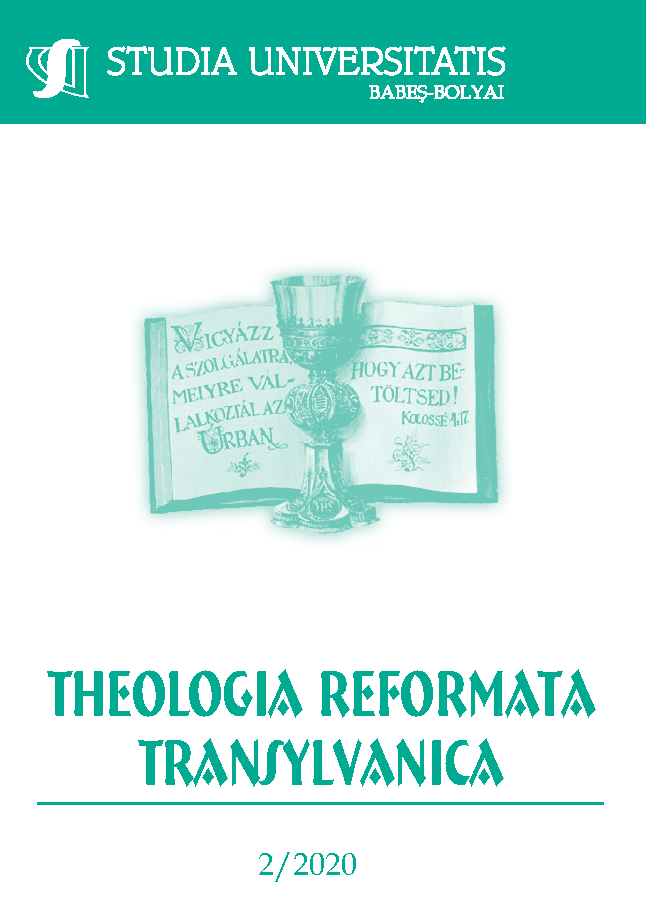The Global Religious Configuration. Realities and Forecasts
DOI:
https://doi.org/10.24193/subbtref.65.2.09Keywords:
religious, demography, agnostics, atheists, Christians, Muslims.Abstract
Based on recent research, we aim to present the current global religious con-figuration, the religious demographic evolution during the twentieth century, and the main trends for the first half of the twenty-first century. From a methodological point of view, we chose to present only those religions that register a share of 1% of the global population, among which we paid increased attention only to Christianity and Islam. The only exception to this rule is Judaism, the reason for advancing this exception being the desire to compare the evolution of the three religions of the Book: Judaism, Christianity, and Islam. The purpose of this presentation is to provide a more nuanced picture of the geographical distribution of each religion and, on the other hand, to illustrate the global religious diversity. From a chronological point of view, the landmarks are the years 1910, 1970, 2000, 2010, 2014, 2030, and 2050. The data collected for the years 1910–2014 is the basis of the forecasts for the years 2030 and 2050. The former ones describe the religious realities, while the latter two open up perspectives on the trends in religious demography. We would like to draw attention to the potential of religious demography in deciphering the religious image of the world in which we live. On the other hand, we consider that exploring the global religious profile and the way it evolves, as well as the factors that bring forth change, is not only an opportunity generated by the organic development of religious demography research but also a necessity for rethinking the pastoral and missionary strategies of the church. Religious demographics provide valuable data about the past together with nuanced knowledge of the present, helping us anticipate and even influence the future. The church, at any time, assumes the past, manages the present, and prepares the future. From this perspective, we believe that a strategic pastoral thinking, regardless of religion or denomination, can be organically outlined, starting from the data provided through the means available to religious demography. While religious demography provides specific data, it does not explain the phenomena behind this data; it notes and invites questions, debates, and explanations about religious affiliation, religiosity, and religious behaviour.References
BULLIVANT, Stephen – RUSE, Michael (eds.) (2014): The Oxford Handbook of Atheism. Oxford, Oxford University Press.
EPSTEIN, Greg M. (2009): Good without God: What a Billion Nonreligious People Do Believe. New York, Harper.
GÂRDAN, Gabriel-Viorel (2014): The Changing Face of Christianity and the New Outlines of Ecumenism. In: Costroiu, Mihnea – Ciucă, Liviu-Bogdan – Burcea, Nelu (eds.): Jurnalul Libertății de Conștiință. Paris, Iarsic Editions Les Arcs. 569–611.(2015a): The Changing Face of Christianity and New Outlines of Ecumenism in the 21st Century. In: Field, Da-vid – Koslowski, Jutta (eds.): Prospects and Challenges for the Ecumenical Movement in the 21st Century.Geneva, Globethics.net, Global 12. 27–63. (2015b): Locul creștinismului în configurația religioasă globală actuală [The Place of Christianity in the Contemporary Re-ligious Configuration]. In: Credinţă şi viaţă în Hristos – Anuarul Episcopiei Sălajului VII. 417–445. (2019): Creștinismul în Europa. Realități demografice și sociale religioase [Christianity in Europe – Demographic and Social Religious Realities]. In: Grama, Clau-diu-Ioan (ed.): Mitropolitul Andrei – păstorul blând al Transilvaniei euharistice. Vol. 2. In honorem. Cluj-Napoca, Renașterea. 261–289. (2020): Credință, apartenență și compor-tament religios în creștinismul european contemporan. Elemente de demografie religioasă [Faith, Belonging, and Religious Behaviour in Contemporary European Christianity. Re-ligious Demography Outlines]. In: Rușeț, Casian (ed.): Comuniune și comunități: jertfă, slujire, spiritualitate. Fabriano –Caransebeș, Montefano The Publishing House – The Publishing House of the Bishopric of Caransebeș. 139–175.
GRIM, Brian J. – JOHNSON, Todd M. – SKIRBEKK, Vegard – ZURLO, Gina A. (eds.) (2015): Yearbook of International Religious Demography 2015. Leiden/Boston, Brill.
HAWLEY, George (2017): Demography, Culture, and the Decline of America’s Christian Denomi-nations. Lexington Books.
JOHNSON, Todd M. – GRIM, Brian J. (2013): The World’s Religions in Figures. An Introduction to International Religious Demography. Wiley-Blackwell.
JOHNSON, Todd M. – ROSS, Kenneth R. (eds.) (2009): Atlas of Global Christianity 1910–2010. Edinburg University Press.
JOHNSTONE, Patrick (2011): The Future of the Global Church. InterVarsity Press.
KAUFMANN, Eric (2010): Shall the Religious Inherit the Earth? Demography and Politics in the Twenty-First Century. London, Profile Books.
LAPIDUS, Ira M. (22002): A History of Islamic Societies. Cambridge University Press.
Pew Research Center (27 January 2011): The Future of the Global Muslim Population. Projec-tions for 2010–2050. Accessible online at: http://www.pewforum.org/2011/01/27/the-future-of-the-global-muslim-population (last accessed: 21 July 2020). (2 April 2015): The Future of World Religions: Population Growth Projections, 2010–2050. Accessible online at: https://www.pewforum.org/2015/04/02/religious-projections-2010-2050 (last accessed: 21 July 2020).
RUTHVEN, Malise (2004): Historical Atlas of the Islamic World. Oxford University Press.
World Christian Database – https://www.worldchristiandatabase.org.
World Religion Database – https://www.worldreligiondatabase.org.
Downloads
Published
How to Cite
Issue
Section
License
Copyright (c) 2020 Studia Universitatis Babeș-Bolyai Theologia Reformata Transylvanica

This work is licensed under a Creative Commons Attribution-NonCommercial-NoDerivatives 4.0 International License.



